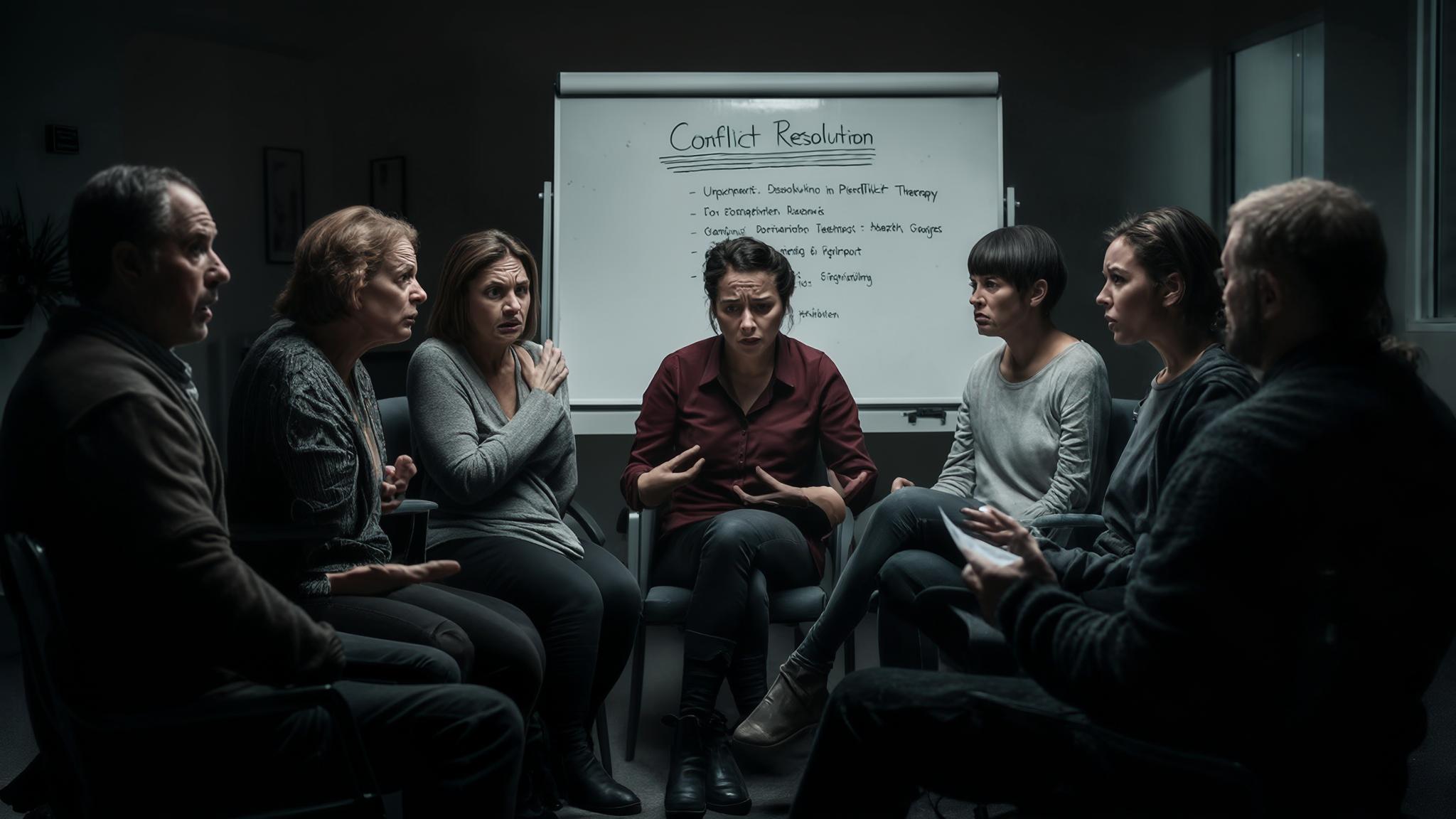I. Introduction
A. Definition of Group Therapy
Group therapy involves a dynamic setting where individuals come together under the guidance of a trained therapist to discuss their thoughts, feelings, and experiences. This approach allows participants to gain insights not just from the therapist but also from each other, creating a rich learning environment.
B. Focus on Anger and Conflict
Anger is a common emotion experienced by many, often linked to stress, frustration, or perceived injustice. In a group therapy setting, addressing anger can open pathways to understanding underlying issues, while conflict may arise from differing opinions or communication styles among participants.
C. Purpose of the Article
This article aims to explore how group therapy can effectively address issues of anger and conflict. We'll provide valuable insights for both therapists who lead these groups and individuals contemplating participation in such therapeutic endeavors.
II. Understanding Anger and Conflict
A. The Nature of Anger
Anger can take various forms, including reactive (immediate responses to stimuli) and proactive (planned actions intended to reclaim power). Understanding these types helps in managing one's reactions.
Moreover, the psychological aspects include feelings of injustice or threat, while physiological responses involve increased heart rate and adrenaline spikes.
B. The Role of Conflict
Conflict arises in interpersonal relationships due to differing values, beliefs, or misunderstandings. It can be interpersonal (between individuals) or intrapersonal (conflict within oneself).
C. The Impact of Unresolved Anger and Conflict
Unmanaged anger can lead to various mental health issues, including anxiety and depression, further straining relationships and creating a toxic environment both personally and socially.
III. The Framework of Group Therapy
A. Types of Group Therapy
Different therapeutic approaches exist in group settings, including:
- Psychodynamic: Exploring unconscious processes and past experiences.
- Cognitive-Behavioral: Focusing on changing thought patterns that lead to problematic behavior.
- Humanistic: Emphasizing personal growth and self-actualization. Support groups differ from therapy groups in that they're often less structured and focus more on shared experiences and peer support.
B. The Role of the Therapist
In group therapy, the therapist acts as a facilitator, encouraging open dialogue and managing group dynamics rather than acting as an authoritative figure. Techniques such as active listening, reframing participant comments, and promoting respectful communication are essential.
C. Group Composition
Homogeneous groups (similar backgrounds) can foster understanding, while heterogeneous groups (varied backgrounds) can provide a broader perspective. Size matters, too; smaller groups often allow more sharing and intimacy.
IV. Addressing Anger in Group Therapy
A. Identifying Anger Triggers
Therapists can lead exercises that help participants become aware of their anger triggers and share personal experiences that evoke these feelings—creating a safe space is essential here.
B. Techniques for Managing Anger
Effective strategies for anger management include:
- Cognitive Restructuring: Replacing negative thought patterns with more constructive ones.
- Mindfulness and Relaxation Techniques: Breathing exercises and mindfulness can help calm the physiological response to anger.
- Role-playing Scenarios: Practicing conflict resolution or difficult conversations can improve interpersonal skills.
C. Encouraging Expression and Validation
Creating a safe space where participants feel validated for their emotions is crucial, considering the importance of active listening, empathy, and meaningful dialogue for emotional sharing.
V. Navigating Conflict in Group Settings
A. Understanding the Sources of Conflict
Conflict often stems from personal histories, unresolved issues, or varying communication styles. Understanding these sources can help facilitate better responses.
B. Conflict Resolution Strategies
Several strategies can help resolve conflicts in group settings:
- Mediation Techniques: Encouraging a neutral party can aid in resolving disputes.
- Open Dialogue: Ensuring participants have opportunities to express and negotiate their differences promotes understanding.
- Setting Group Norms: Establishing guidelines for communication helps maintain respect and reduces the potential for conflict.
C. Transforming Conflict into Growth
Viewing conflict as an opportunity for growth and learning fosters resilience. Addressing disputes can strengthen group cohesion, making future interactions more constructive.
VI. Case Studies and Examples
A. Real-life Examples of Group Therapy Addressing Anger
Numerous success stories illustrate the power of group therapy in addressing anger and conflict. For instance, one group might consist of individuals discussing childhood trauma, realizing shared experiences can lead to mutual support and healing.
Patient testimonials often highlight increased self-awareness and improved interpersonal relationships gained through the process.
B. Analysis of Group Dynamics
Observations from group interactions reveal patterns in managing anger and conflict, often highlighting the significance of group norms, engagement levels, and active participation in promoting a positive therapy experience.
VII. Challenges and Limitations
A. Common Challenges in Group Therapy
Common hurdles include resistance to participation from some members and the dominance of outspoken individuals, which can inhibit group effectiveness.
B. Limitations of Group Therapy
Group therapy isn’t a one-size-fits-all solution. It may not be suitable for everyone, and there’s a risk it can exacerbate conflict if not managed appropriately.
C. Strategies for Overcoming Challenges
Therapists can employ interventions like one-on-one discussions outside of group sessions to address difficult dynamics or a structured approach to balance participation among all members.
VIII. Conclusion
A. Summary of Key Points
Group therapy offers effective methods for addressing anger and conflict, facilitated by skilled therapists who create a supportive environment.
Therapists play a critical role in guiding participants toward understanding and resolution.
B. Call to Action
Individuals experiencing difficulties with anger or conflict are encouraged to consider group therapy as a constructive resource. Ongoing education and research in this field continue to unveil new techniques that enhance therapeutic relationships.
IX. References
- American Psychological Association. (2020). Group Therapy: Theory, Practice, and Research.
- Yalom, I. D., & Leszcz, M. (2005). The Theory and Practice of Group Psychotherapy.
- Corey, G. (2015). Theory and Practice of Group Counseling.
X. Appendices
-
Sample Group Therapy Exercises
Examples of exercises aimed at fostering self-awareness, such as guided imagery or journaling prompts. -
Resources for Finding Group Therapy Programs
Directories of therapy groups available in various communities. -
Contact Information for Professional Organizations
National organizations like the American Group Psychotherapy Association for further resources.

